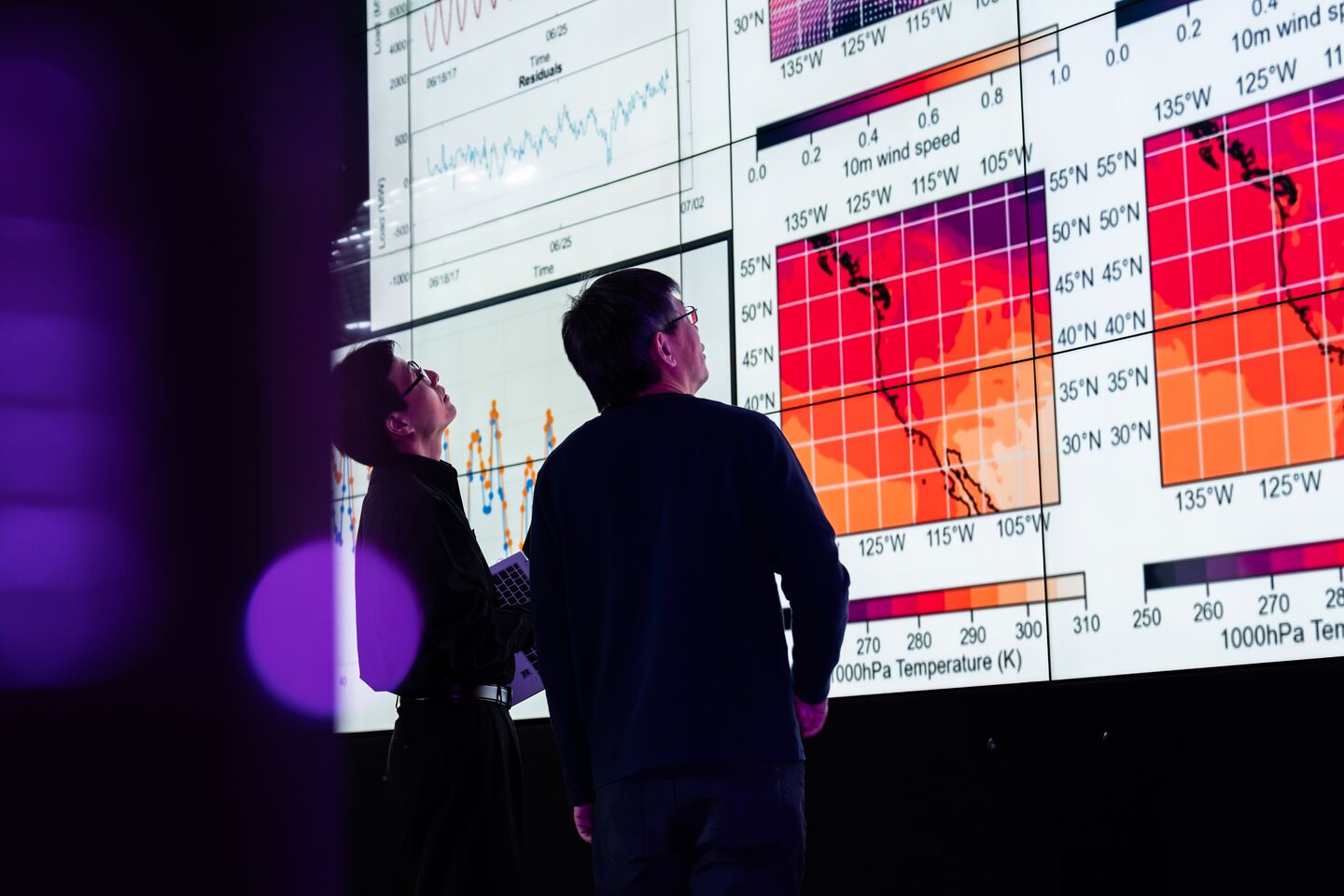
Grid Analytics
Grid Analytics
Actionable intelligence for
planning and operations
Actionable intelligence for
planning and operations
PNNL uses computing, modeling, and simulation to provide predictive capabilities for managing grid dynamics and uncertainties.
Andrea Starr | Pacific Northwest National Laboratory
Every day, the nation’s power grid becomes more complex. It incorporates hundreds of millions of connected devices, which create unprecedented volumes of data. The grid must integrate distributed energy resources with traditional large-scale power generation while maintaining adequate reliability and resilience. And it must allow increasing situational awareness to detect and address physical and cyber threats, such as earthquakes, storms, and malicious attacks.
For a power grid to maintain maximum reliability and efficiency, operators need to know what’s happening across the system, and locally, as it happens. Planners need to determine future operating schedules, prepare for system expansion, and plan for emergency response and recovery. PNNL leaders in grid analytics embed analytical insight into operational and planning systems. This means applying advanced analytic methods to data, including predictive and prescriptive analytics for forecasting, simulating, analyzing, controlling, and optimizing the grid while taking into account its interdependency with other systems.
In developing advanced grid analytics, PNNL collaborates with industry stakeholders to create the control room of the future and to develop planning functions that address emerging power grid requirements. These advances enable operators to see and manage their grids as holistic systems in real time. Likewise, planners can conduct comprehensive analyses and optimization for future scenarios. Through high-performance computing and new mathematical algorithms, operators and planners can identify signs of grid failures and develop new ways to maintain grid reliability and resilience.
Improving prediction, reducing uncertainty

The electric grid is our most complex—and essential—machine.
Learn how the grid powers America
PNNL uses computing, modeling, and simulation to provide predictive capabilities for managing grid dynamics and uncertainties. Analytical platforms enable large-scale evaluation, control, and optimization of the energy ecosystem.
PNNL researchers are also advancing grid simulations for petascale and exascale computation. These simulations enable large-scale scenarios for transmission planning and cyber vulnerability assessments.
To test simulations under realistic operating conditions, researchers and industry stakeholders can use the Electricity Infrastructure Operations Center on PNNL’s Richland campus. This unique facility integrates industry hardware and software, real-time grid data, and advanced computation in two control rooms. It can be reserved for training and situational awareness exercises and can host network models and data analysis tools.
Keeping critical infrastructure running
PNNL also contributes its analytics expertise to efforts such as the Department of Energy (DOE) Office of Electricity’s Advanced Modeling Grid Research Program, the DOE Office of Advanced Scientific Computing Research’s Power Grid Math Program, the DOE Advanced Research Projects Agency-Energy’s Grid Optimization Competition, and the North American SynchroPhasor Initiative. These collaborations are dedicated to improving power system reliability and resilience by using data, computing, and innovative tools.
For the Department of Homeland Security, PNNL supports the National Infrastructure Simulation and Analysis Center, which focuses on protecting the nation’s critical infrastructure. As part of this effort, PNNL analyzes potential impacts on electric power, water, and transportation systems in the event of a disruption. PNNL continually works to develop next-generation grid analytics tools and to validate those tools with industry partners. As these advanced solutions reach the power grid community, the grid will become more resilient, secure, and flexible.
To access datasets and models, check out the Earth and Energy Research Portal.

